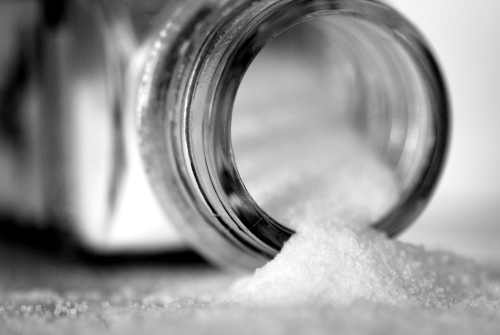By: Susan Mayne, Ph.D., Director, FDA’s Center for Food Safety and Applied Nutrition
 As the former Chair of the Department of Chronic Disease Epidemiology at the Yale School of Public Health, I have looked critically at the totality of evidence on the link between sodium and chronic disease. The data are clear: Americans are getting too much sodium in their diets. As a scientist, a former academician, and now as a policy maker, I am confident that FDA is on the right path in announcing today draft, voluntary guidance for the industry on meeting short-term and longer-term sodium targets for a wide variety of foods. This guidance is meant to build on existing efforts already underway by many manufacturers to reduce sodium.
As the former Chair of the Department of Chronic Disease Epidemiology at the Yale School of Public Health, I have looked critically at the totality of evidence on the link between sodium and chronic disease. The data are clear: Americans are getting too much sodium in their diets. As a scientist, a former academician, and now as a policy maker, I am confident that FDA is on the right path in announcing today draft, voluntary guidance for the industry on meeting short-term and longer-term sodium targets for a wide variety of foods. This guidance is meant to build on existing efforts already underway by many manufacturers to reduce sodium.
Because we recognize the essential role played by food companies and restaurants on this issue, we are committed to working with the food industry on a gradual approach to sodium reduction.
What the Science Tells Us
The link between sodium consumption and blood pressure is strong and well documented. High blood pressure is a key risk factor for heart disease and stroke. There is strong agreement among expert bodies such as the Institute of Medicine (IOM) on the need to reduce consumption to less than 2,300 milligrams per day (mg/day). And this level of consumption for most people is further supported by the recently issued 2015-2020 Dietary Guidelines for Americans, which involved expert review of the current body of research by the Dietary Guidelines Advisory Committee and federal experts who reviewed the Committee’s recommendations. The totality of scientific evidence, as reviewed by many well-respected scientific organizations, continues to support lowering sodium consumption from current levels.
In fact, it’s very difficult in the current marketplace NOT to consume too much sodium. The average intake today is over 3,400 milligrams—significantly more than the 2,300 milligram limit recommended by federal guidelines. And it’s not just adults who are eating too much sodium: Children and teens consume more than is recommended.
Our Approach
The FDA’s approach takes into account the technological challenges involved in solving this problem. To that end, the FDA assessed the sodium content of thousands of products in the marketplace and engaged with experts in industry, academia, and government to get the best available scientific and technical input. We know that sodium has important functions in many foods, such as taste, texture, and microbial safety, and it simply can’t be removed without careful consideration of those factors.
Our approach encourages gradually reducing sodium in the majority of foods that contain it. Sodium comes from a lot of different types of foods—not just the ones we think of as high in sodium. So we have divided the foods containing sodium into about 150 categories ranging from cereals to combination foods like pizzas and sandwiches, and draft sodium targets for each category. Not only is this approach more precise than a “one size fits all” strategy, but it also recognizes that different foods have different potential for sodium reduction.
Moreover, our draft targets apply to processed and prepared foods that are eaten both at home and outside the home. The fact that about one-half of each food dollar is spent on foods prepared outside the home* makes this a common-sense strategy and helps to create a level playing field for industry.
Why the 2-year and 10-year targets? The answer is simple. We recognize that some reductions can be made in the short term, but that further reductions may require strategies that take time to develop. We are confident that the two-year targets are readily achievable and that it makes sense to act on them first. That’s in part because many companies have already taken steps on their own initiative to reduce sodium in certain foods, and we applaud these efforts.
The facts speak for themselves. Our food supply is still too high in sodium, and there is important work yet to be done. With today’s announcement we commit to working closely with industry on the best path forward to reduce sodium in our food supply and improve the public’s health.
